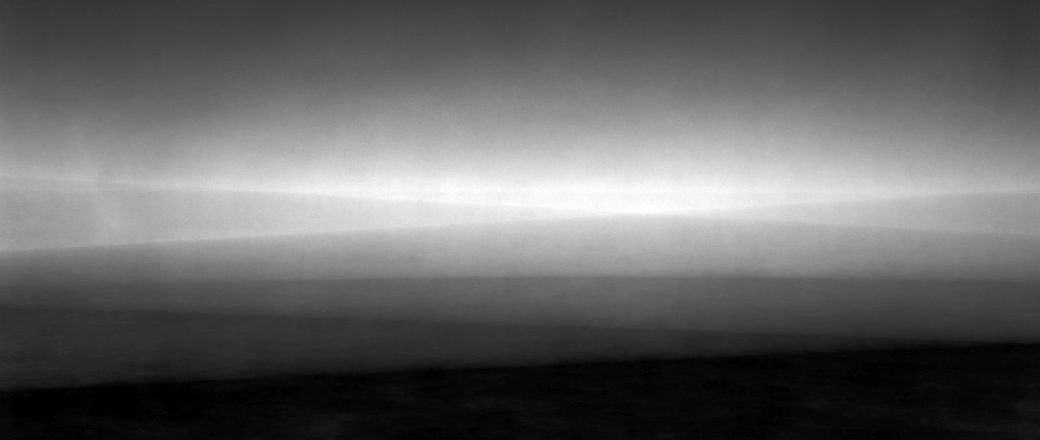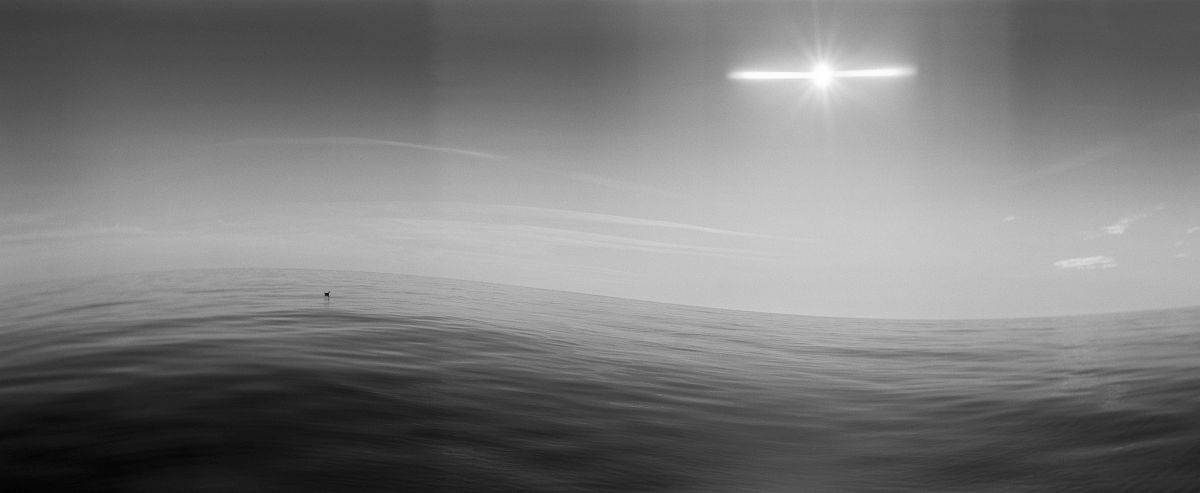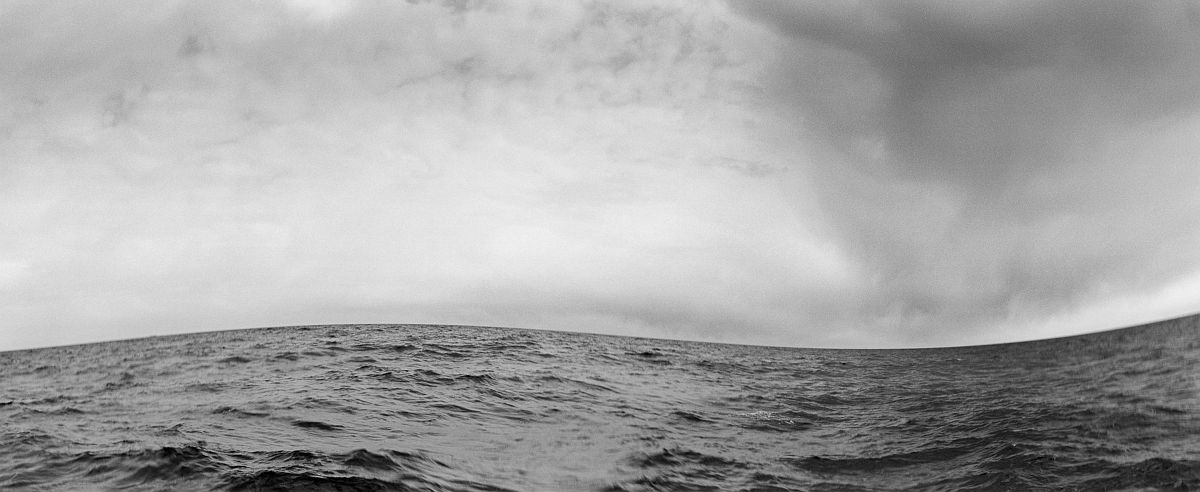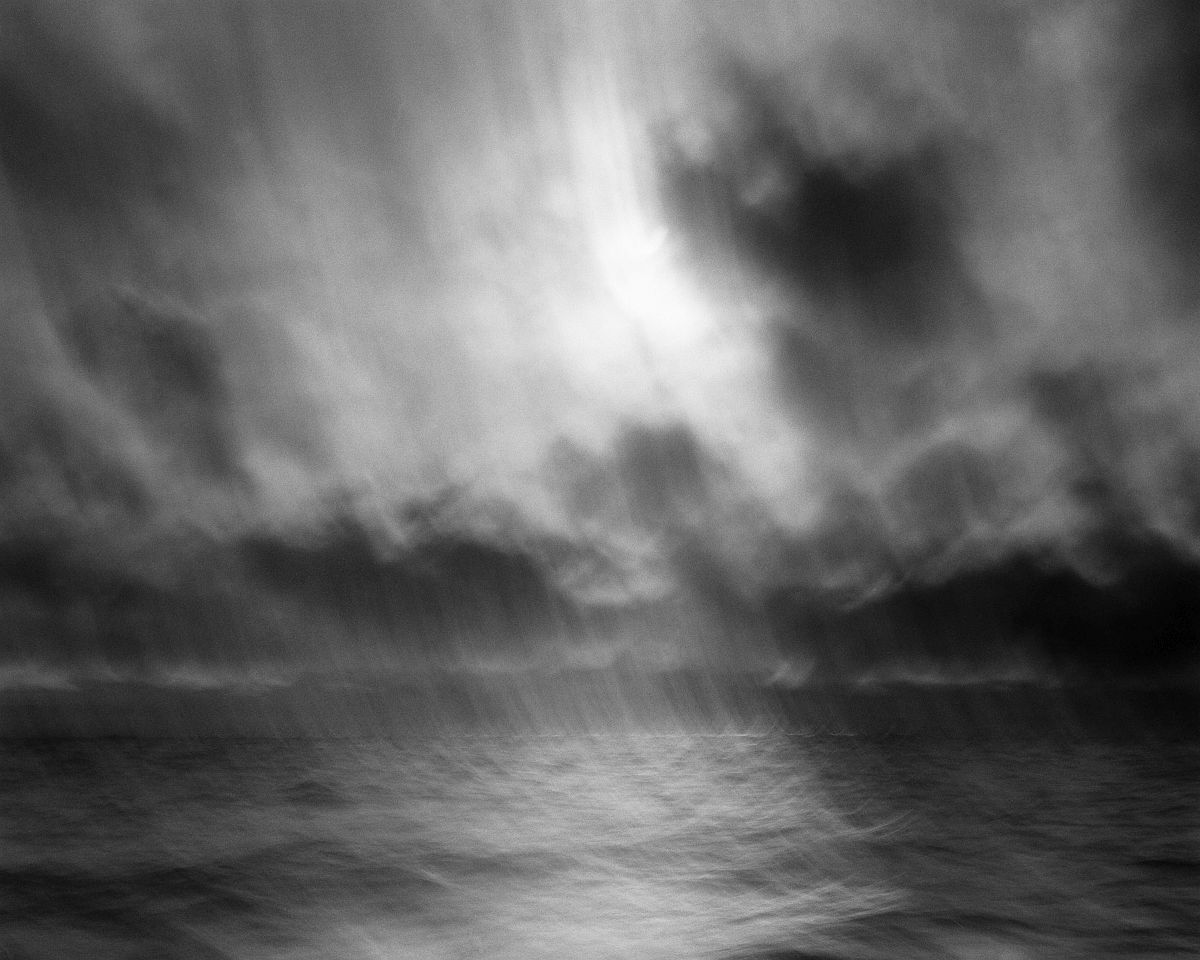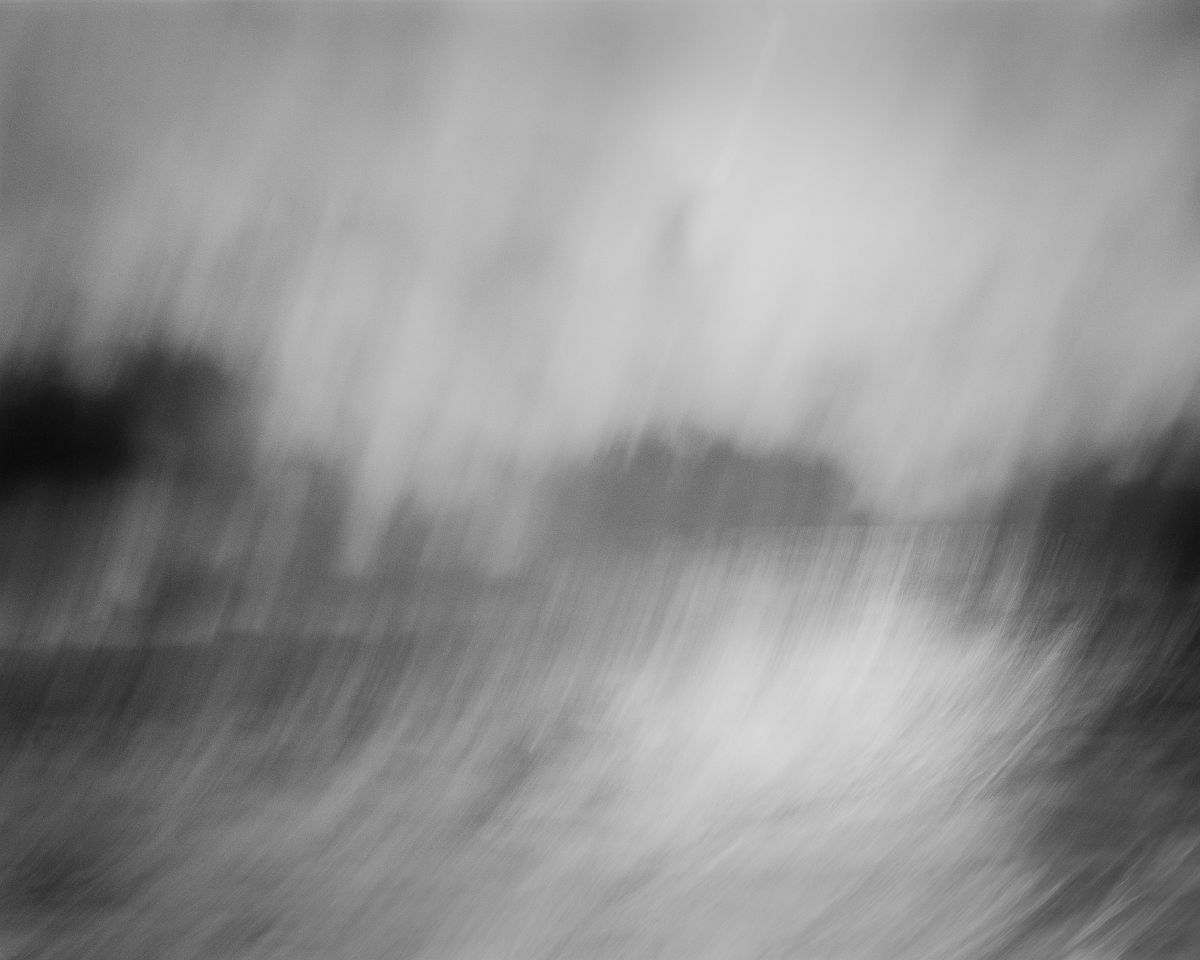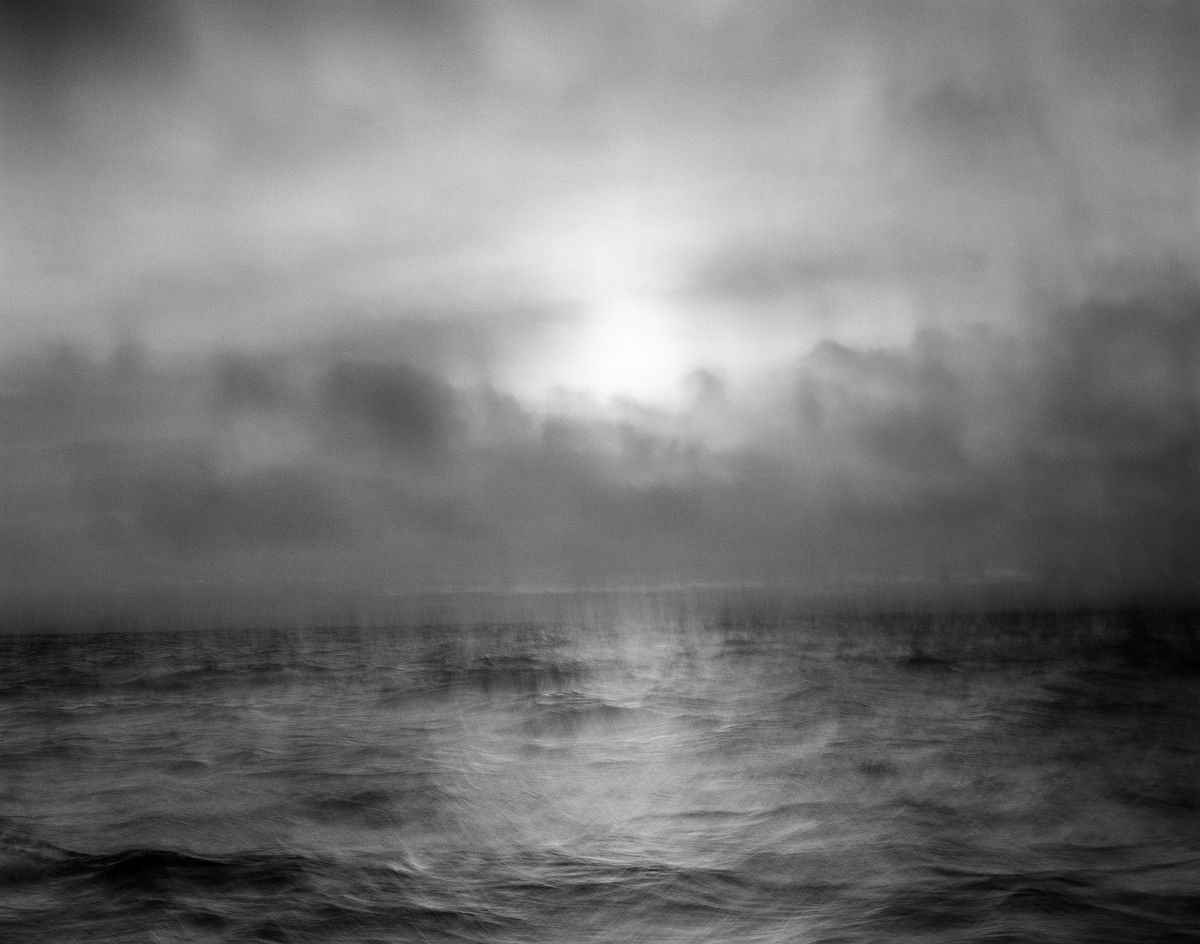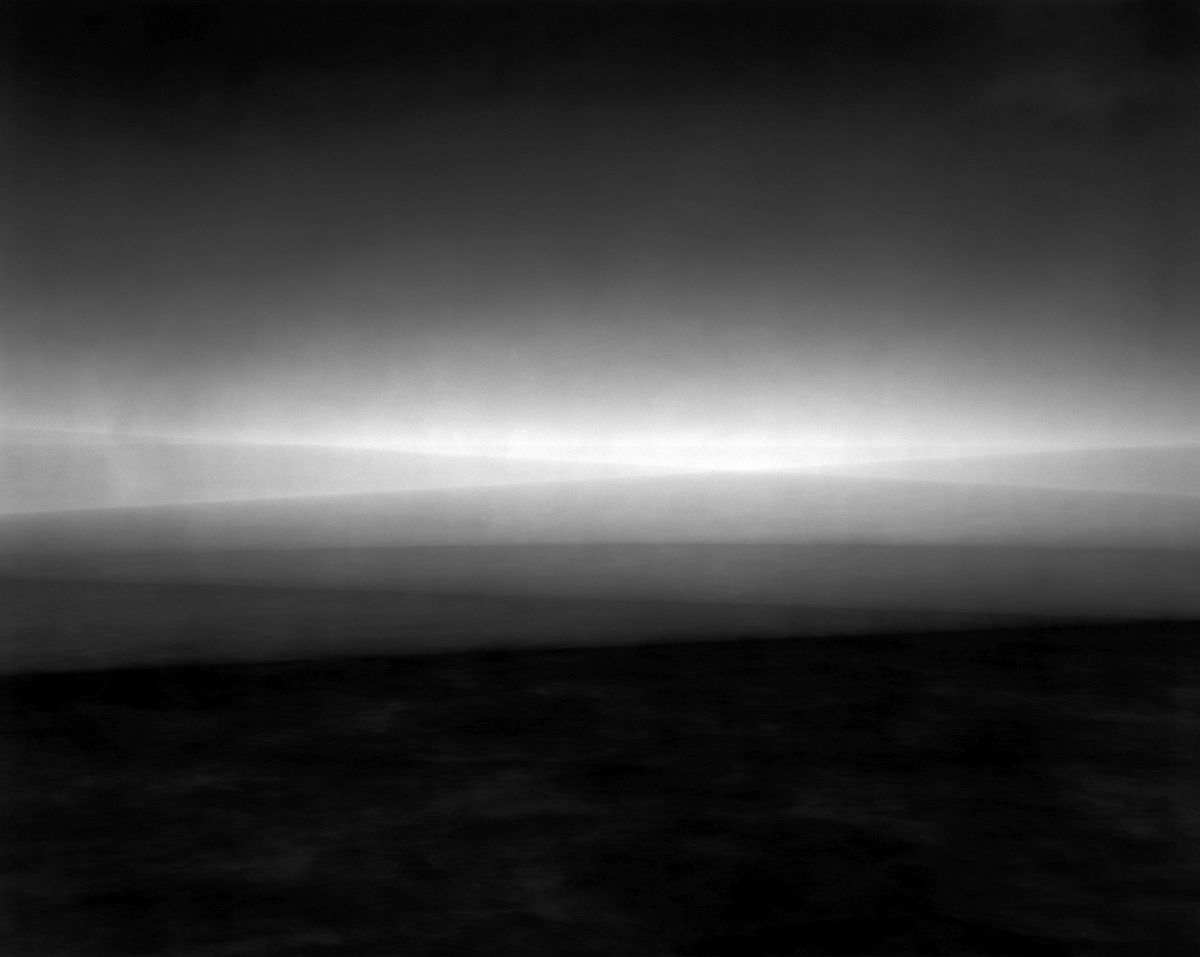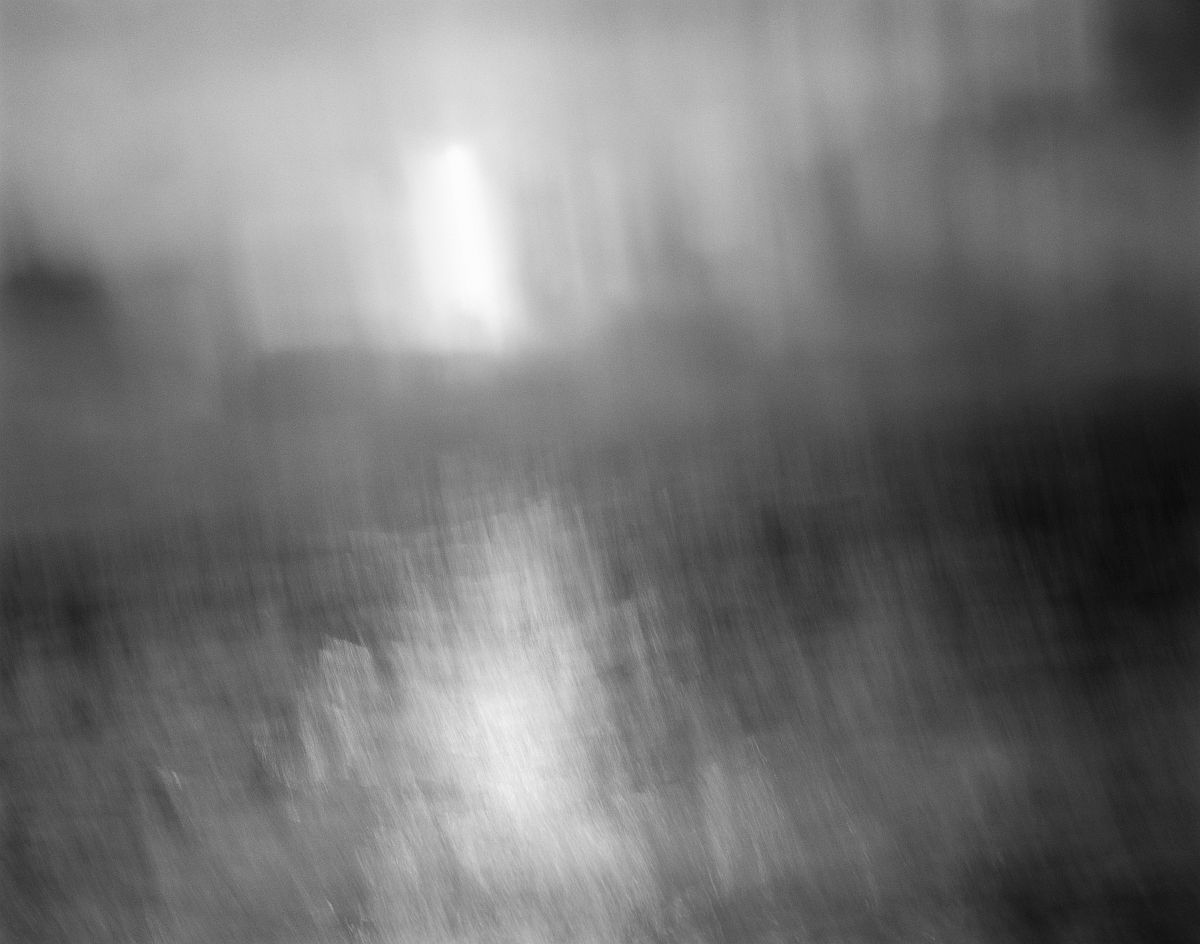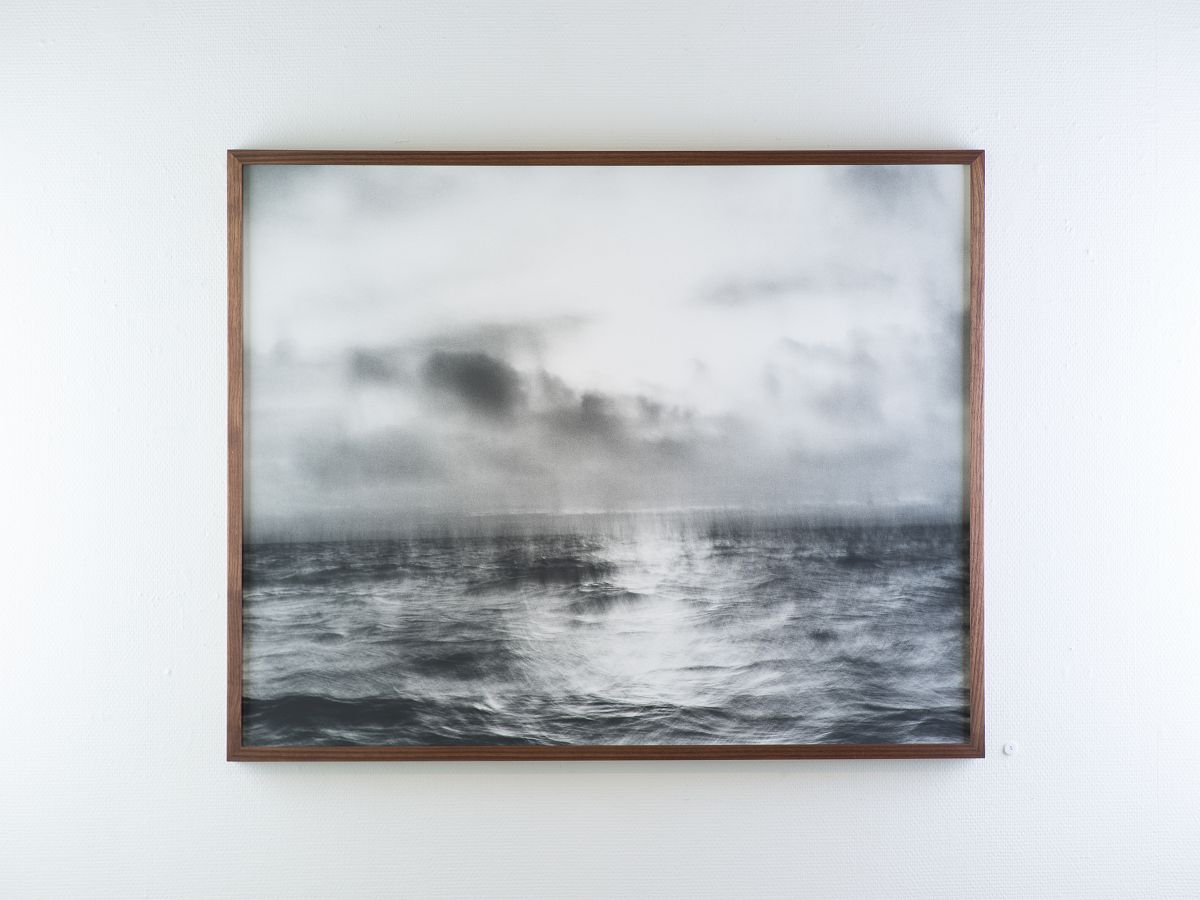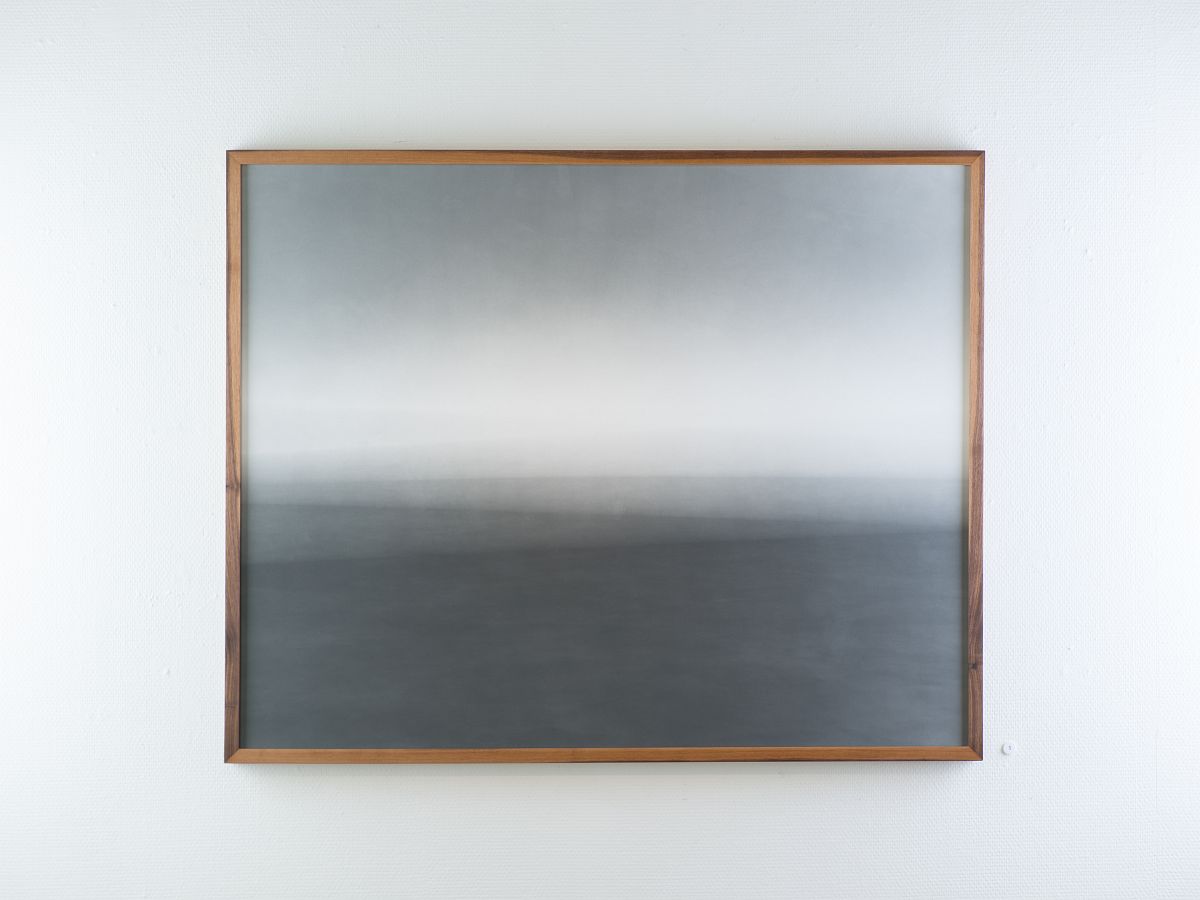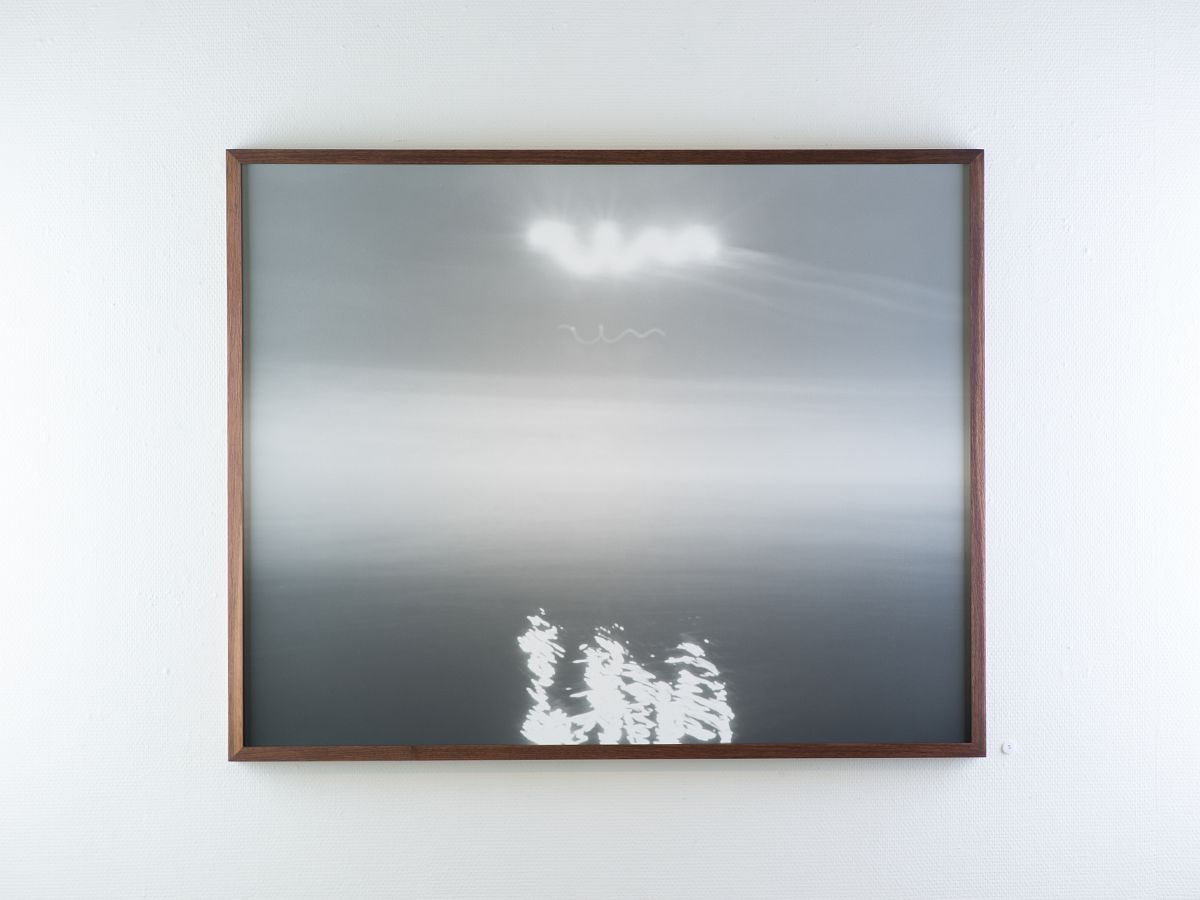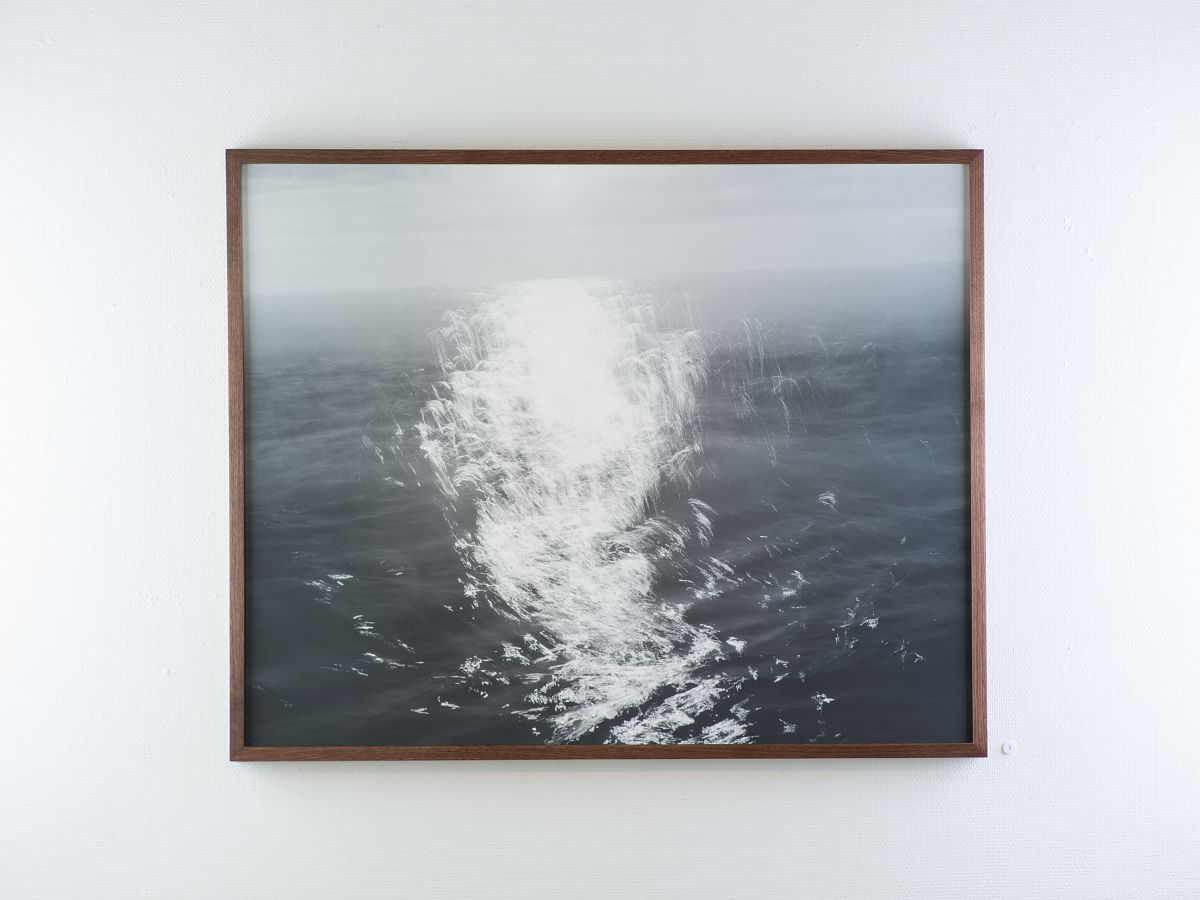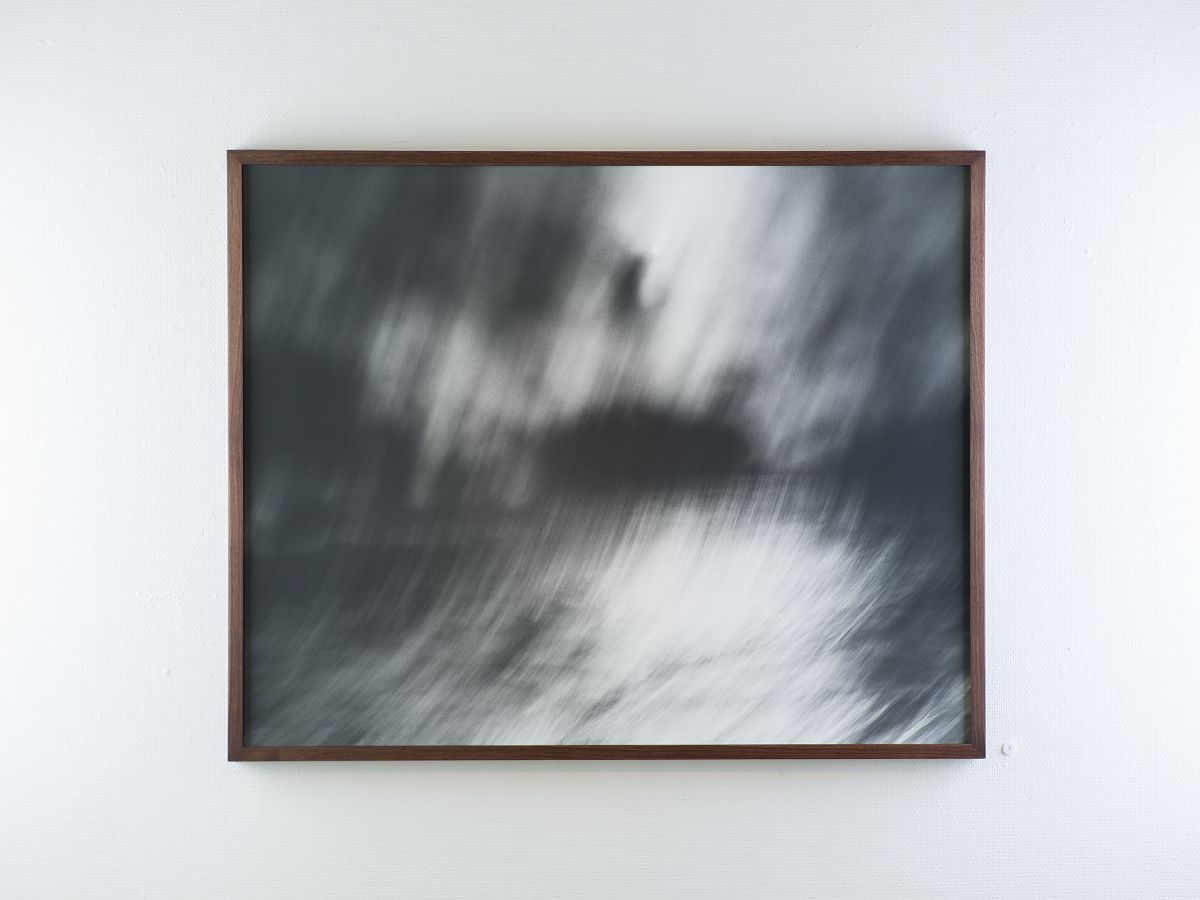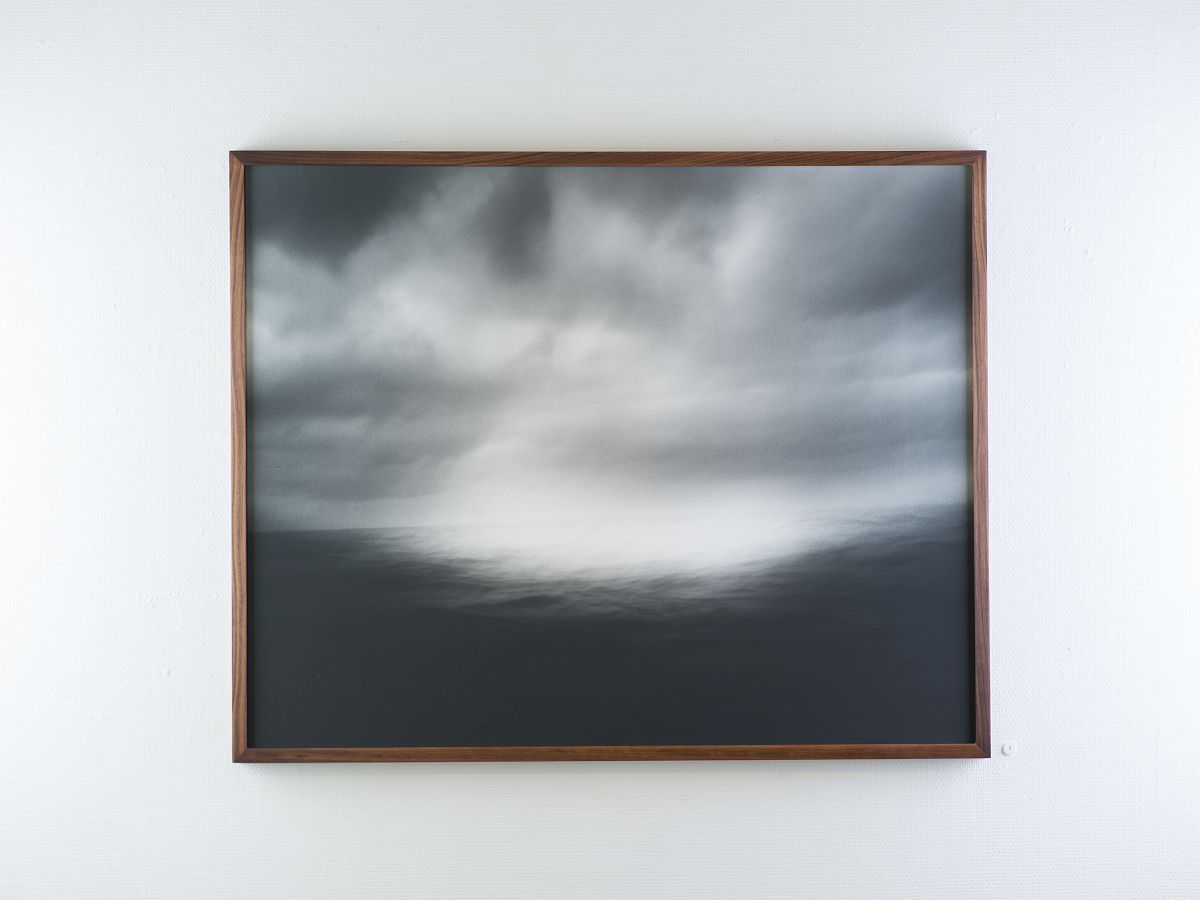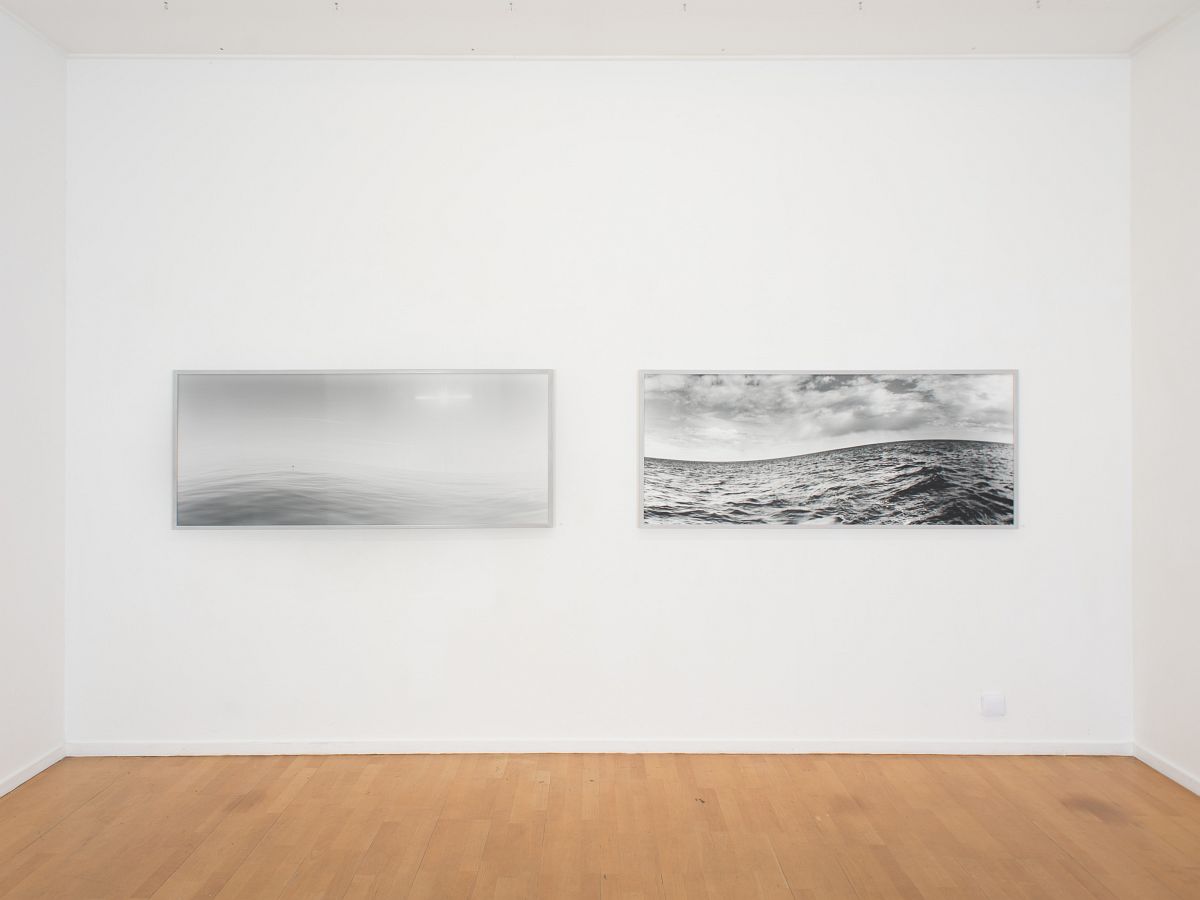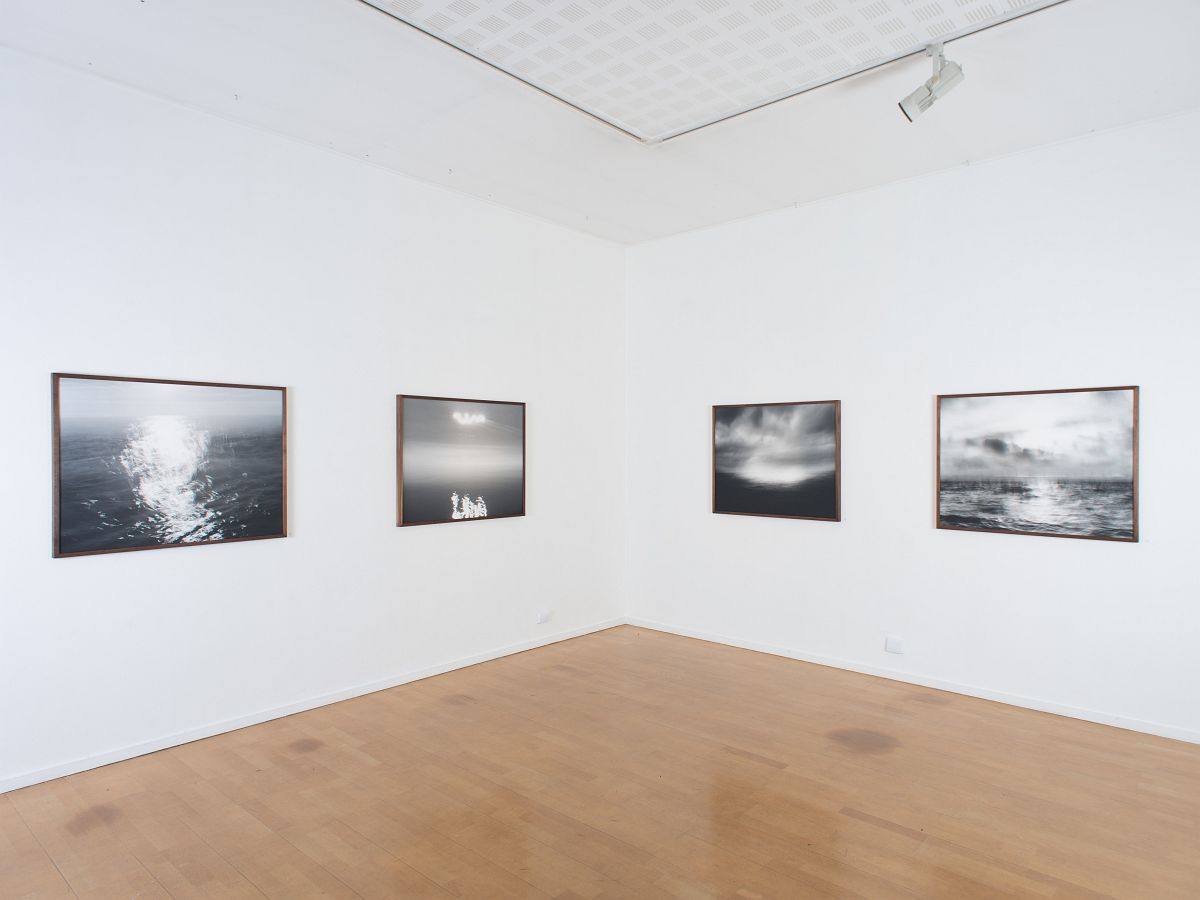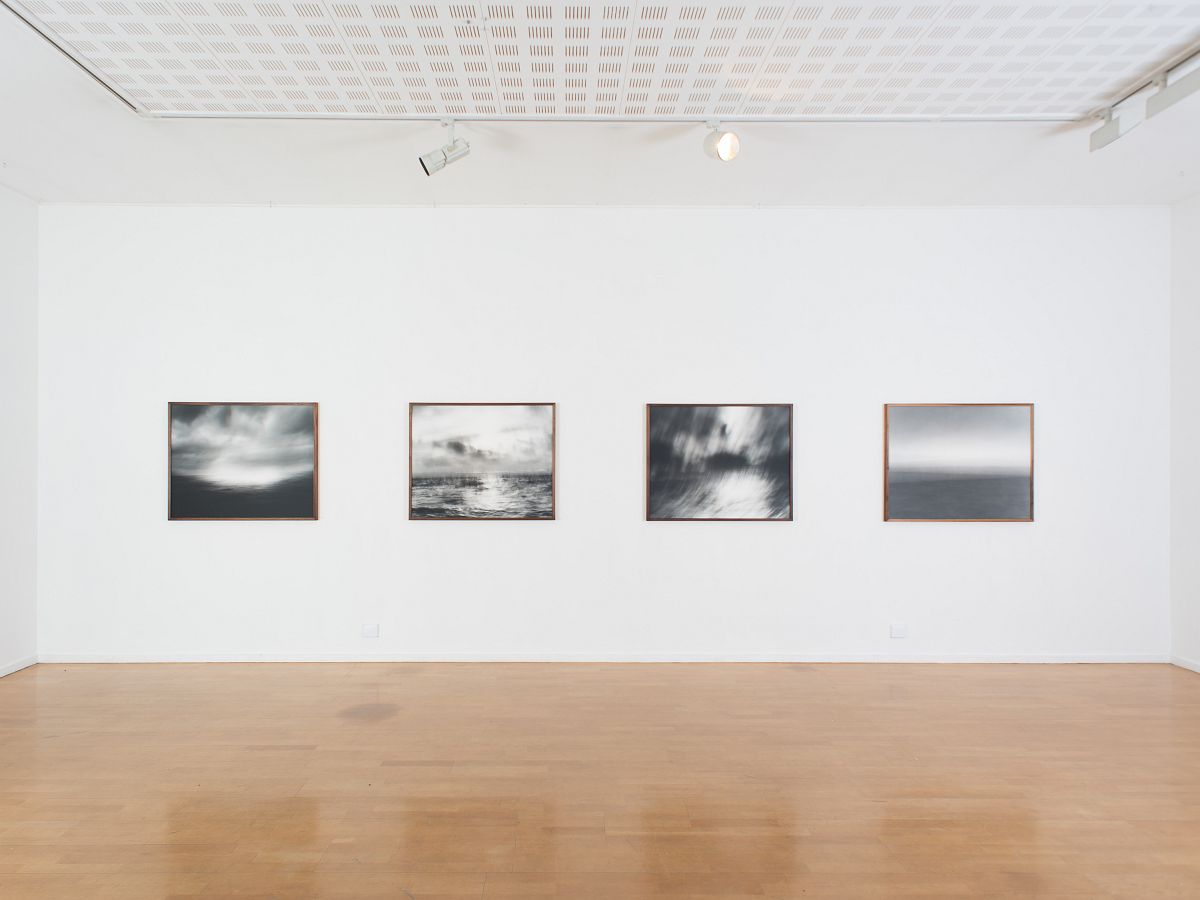Ole Brodersen‘s work explores the landscape and the natural forces that animate it. He is attempting to show something beyond the appearances; the experience of the observer in the landscape. Ole is trying to capture the feeling of being present in the landscape, by making images that are, to an extent, a direct imprint of the environment in motion. This can be achieved only in a semi-controlled manner, where the photographer gives up some of the control over the production of the final image.
The majority of the images are seascapes, and where taken in and around Lyngør. This area has a very long seafaring history that stretches back for generations. Ole has a strong connection with
this landscape. His father is a sail maker, his grandfather was a sailor – like many of his ancestors. Everyday life here is intricately bound with and supported by the sea. Ole used to row to school and the fact that Lyngør is so prominent in his work is not surprising. It provides a subject matter and a natural backdrop for his pictorial experiments.
The basic working procedure is to orchestrate a shot in such a way that the unpredictable processes operating in a landscape can be captured. In the case of “Trespassing”, various objects are introduced, such as: Styrofoam floats, lights, kites and pieces of sail, etc. During one long exposure, they are allowed to drift freely through the frame, tracing a dynamic portrait of the landscape. Physical forces in action are harnessed in a different way in “Horizontal Displacement”. Ole makes exposures of the horizon from a small boat. The camera used as a tool to register movement becomes part of the movement it is mapping. Semi fast exposures give unsharp renderings in heavy sea and more defined results in calmer weather.
In “Horizontal Displacement” the camera is put in a partially controlled situation, and waiting to be hit by chance. There is here an echo of the famous legend of Turner tying himself to the mast
of a ship in order to experience the storm. The situation here is maybe less dramatic, but the stakes are the same. To make images that are not simply snapshots of the transitory states of a
landscape, but transcripts of the experience of being in a place and reacting to everything that surrounds you.
Unlike snapshots, Brodersen operates in an expanded temporal register. Through long exposures, multi-exposures or rotating panorama shots, he works with intervals of time, which gives space
to the forces in the landscape. The resulting images are evocative materializations of the physical processes at work. They are not images of the landscape, but rather traces of its movement. Ole
is trying to unveil a hidden landscape within the landscape. The entire procedure enables nature to yield a figure of movement. Invisible force is captured into a visible sign.
Website: olebrodersen.com

